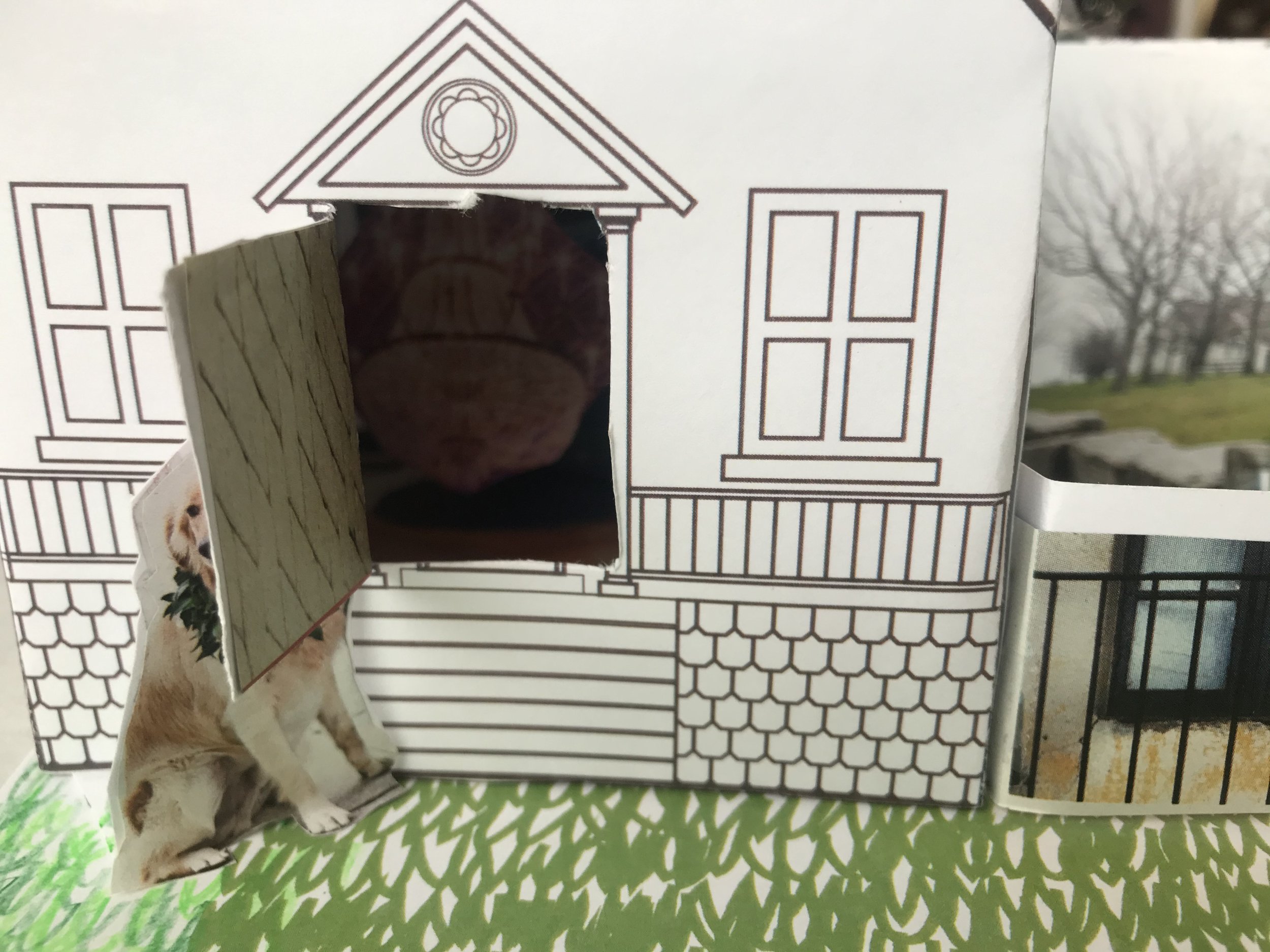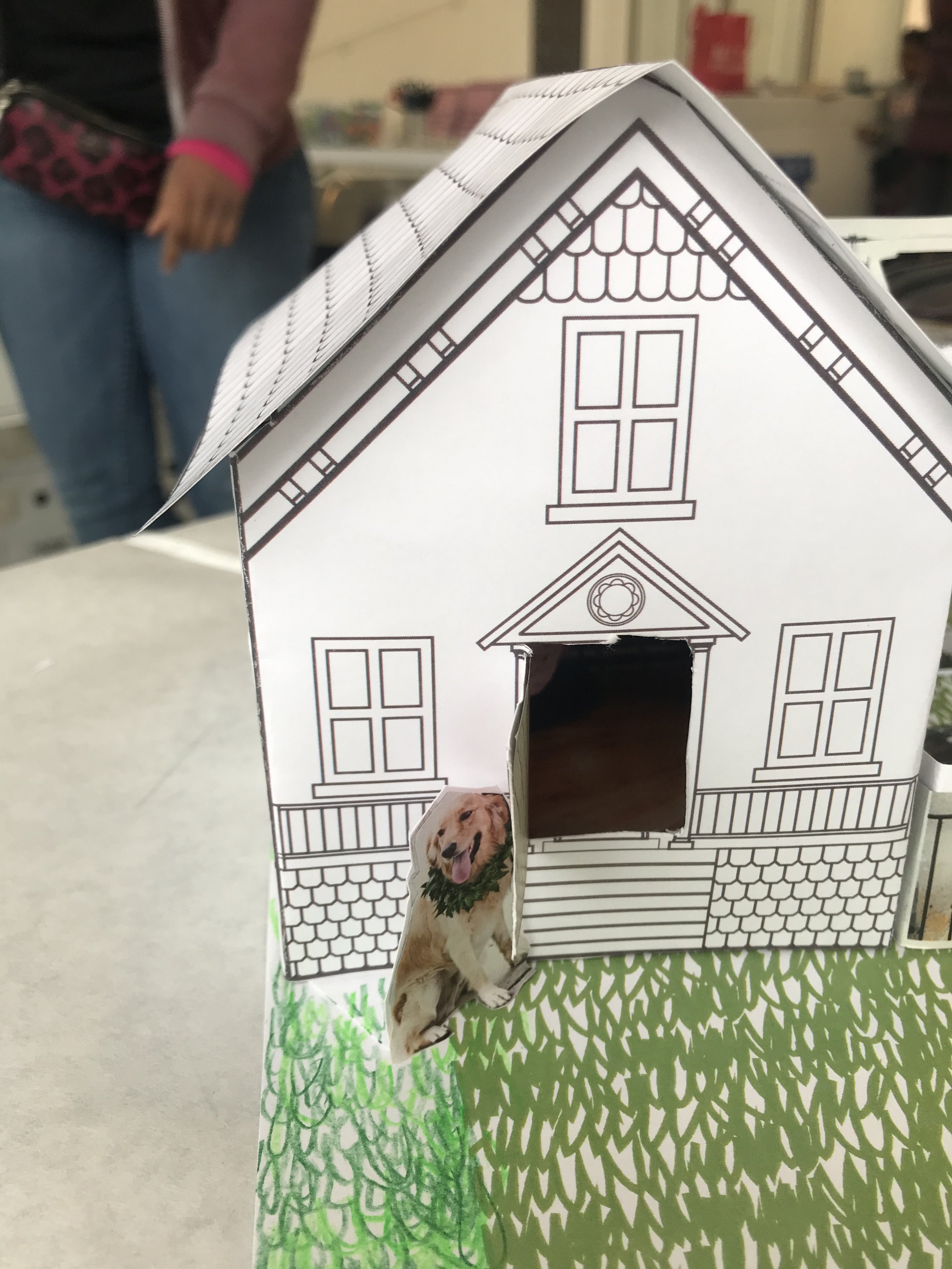
Worker Cottage Home
Family Days at the Smart Museum are designed to celebrate the creative potential in all of us. With new projects every month, Family Days offer opportunities for kids and their caregivers to create together and connect with one another. Each program is unique, fun, and free, emphasizing invention, improvisation, and hands-on creativity.
Artist Tanya Scruggs Ford takes you on a journey through Chicago's architectural history. Build a kid-sized worker cottage, create cities with wooden blocks, and make your own paper houses using a take-home workbook designed by Scruggs Ford. The collaborative projects connect kids from across Chicago as they dream big and build their own city together. Worker cottages are a significant architectural and historical feature in Chicago, representing a pivotal period in the city's development. These modest yet charming homes played a crucial role in accommodating the burgeoning workforce during the late 19th and early 20th centuries.
Historical Context: Chicago's worker cottages emerged during the late 19th century as the city experienced rapid industrialization and population growth. Immigrants and laborers flocked to the city in search of employment opportunities in the booming factories and industries. To meet the housing demands of this growing workforce, worker cottages became a popular housing solution.
Architectural Characteristics: Worker cottages in Chicago are typically characterized by their simple and practical design. They were built with efficiency and affordability in mind, utilizing readily available materials such as brick and wood. These cottages often feature the following architectural elements:
Single-story or 1.5-story: Most worker cottages are one or one-and-a-half stories tall, providing basic shelter without unnecessary extravagance.
Gable Roof: A steeply pitched gable roof is a common feature, allowing for efficient rainwater drainage and minimizing maintenance needs.
Front Gable: Many worker cottages have a front-facing gable, creating a distinctive look and providing additional space for a small attic or storage.
Front Porch: Some worker cottages have a small, covered front porch, often adorned with decorative elements like brackets or columns.
Brick Facades: Bricks were a popular choice for the exterior of these cottages, providing durability and a sense of solidity.
Minimal Ornamentation: Worker cottages typically feature minimal decorative elements, reflecting their utilitarian purpose.
Community and Social Significance: These cottages were not just a product of architectural evolution but also played a vital role in shaping the social fabric of Chicago's neighborhoods. They were clustered together in close-knit communities, creating a sense of camaraderie among the residents. The affordability of worker cottages made homeownership attainable for many working-class families, fostering a sense of stability and pride in their homes.
Preservation and Legacy: As Chicago evolved, many worker cottages faced threats of demolition due to urban development and changing housing trends. However, in recent years, there has been a renewed appreciation for their historical and architectural value. Preservation efforts have led to the recognition of these cottages as an essential part of Chicago's history, with some being designated as historic landmarks.
Today, worker cottages in Chicago stand as a testament to the city's industrial heritage and the resilience of its working-class population. They serve as a tangible link to the past and a reminder of the challenges and triumphs of a bygone era, making them an integral part of Chicago's architectural and cultural legacy.
















